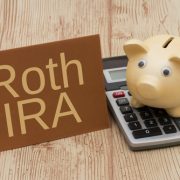Self-Directed IRAs for Joint Ventures and Partnerships: What You Need to Know
Many of the great business success stories of all time weren’t the stories of entrepreneurs. They were the stories of partnerships and joint ventures. One person found another person. Their skills complemented each other, and a great business was born. Fortunately, you can utilize a similar structure with Self-Directed IRAs — as long as you know the rules. That means that you’ll be able to create a retirement strategy that suits your business style, even if you typically rely on partnerships to move forward.
What is a Joint Venture or Partnership?
Simply put, a joint venture or partnership is when one individual enters into a business arrangement with another individual—or multiple individuals. A partnership of this sort has advantages like spreading out the risk, enabling larger purchases to be made, and bringing like-minded individuals together for a synergistic effect.
In the usual business world, such a partnership is straight-forward. But how does it work when you’re using a Self-Directed IRA?
An Example of a Self-Directed IRA Using a Joint Venture or Partnership
First things first: a Self-Directed IRA allows investors to hold a wide range of investment assets, such as real estate and precious metals. And because real estate is a common investment by which multiple investors come together, you won’t be surprised to learn that these joint ventures or partnerships often center around making a real estate investment.
That said, let’s use an example of a joint venture. Someone using a Self-Directed IRA uses that IRA to invest in a house with someone else (a non-disqualified person). Both investors use the opportunity to refurbish the house, restore its quality, and then turn around and sell the house at a profit. This is the end of the short-term venture, and both parties go their separate ways. The joint venture, now successful, has ended.
With a partnership, there may be a formal written agreement that goes into the long-term future. This is a formalized business agreement wherein the partner parties may invest in multiple properties over time. The roles are clearly defined. Think of a long-term partnership as an agreement of joint ventures going into the future.
Disqualified Persons—and One “Little Known Fact”
When researching Self-Directed IRAs, you may have been disappointed by the fact that you can’t work with a disqualified person for a retirement investment. For example, you wouldn’t purchase a property, fix it up, and then rent it out to someone you know, like a son or daughter. At least—not with a Self-Directed IRA.
But with Self-Directed IRAs for Joint Ventures and Partnerships, you might be surprised at the leeway you receive. As we state here at American IRA:
“A little known fact is that your IRA can joint venture and/or partner with you and/or others that would be considered disqualified people so long as this partnership occurs at ‘the time of acquisition’. This is a winning situation that allows you to generate current income and to build your retirement account.”
The “time of acquisition” is an important distinction here. And utilizing it properly means that investors can use a Self-Directed IRA to build up their real estate assets and create a stronger portfolio for retirement.
Interested in learning more about Self-Directed IRAs? Contact American IRA, LLC at 866-7500-IRA (472) for a free consultation. Download our free guides or visit us online at www.AmericanIRA.com.









